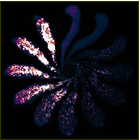
2015年1月21日讯 /生物谷BIOON/ –近日,国际在线期刊mBio刊登了来自美国科学家针对埃博拉病毒治疗方法的最新研究成果。科学家们发现,埃博拉病毒基因组变化可能会对基于埃博拉病毒序列而研发出来的治疗方法产生负面影响,因此应对现在正在应用的治疗方法进行重新评估。
自2013年埃博拉病毒在西非地区爆发以后,如何保护公众健康和应对突发感染性疾病得到大众和科学家们广泛关注。到2015年1月8日,这次埃博拉病毒爆发的平均致死率达到了39.4%,而在另一项研究中,使用了不同计算方法计算出的致死率达到了惊人的70%!如何控制埃博拉病毒传染以及如何治疗埃博拉病毒感染疾病成为当务之急。
现在应用于非人灵长类动物的基于埃博拉病毒序列开发出的治疗方法主要有三种:小干扰RNA,二胺吗啡代寡核苷酸(PMO)以及利用抗体进行被动免疫治疗。总的来讲,这三种方法主要是通过促进病毒转录本降解(siRNA)或阻断翻译(PMO)来抑制病毒复制以及通过抗体中和病毒促使宿主产生有效免疫应答来达到治疗效果。本文作者们搜集了所有公共资源中有关2013~2014年导致西非病毒爆发的埃博拉病毒Makona变体的基因组信息,并且评估了EBOV/Mak相比于EBOV/Yam-May和EBOV/Kik-9510621变体而出现的基因组变化可能对现行应用的治疗方法产生的影响。通过对比发现,EBOV/Mak变体在已发表的基于siRNA和PMO的结合区域中存在四个突变,而在免疫治疗混合剂中,单克隆抗体所识别的抗原表位存在21个非同步改变。
总的来说,文章中提供的信息为EBOV/Mak基因组变化可能对现行应用的基于埃博拉病毒序列开发出的治疗方法产生的潜在影响提供了一个更为准确的评估。考虑到埃博拉病毒仍然在人类个体间传播,对病毒变体进行测序,并通过类似的方法进行评估势在必行。对抗埃博拉,还需斗智斗勇。(生物谷Bioon.com)
本文系生物谷原创编译整理,欢迎转载!转载请注明来源并附原文链接。谢谢!

Evaluation of the Potential Impact of Ebola Virus Genomic Drift on the Efficacy of Sequence-Based Candidate Therapeutics
Jeffrey R. Kugelman, Mariano Sanchez-Lockhart, Kristian G. Andersen, Stephen Gire, Daniel J. Park, Rachel Sealfon, Aaron E. Lin, Shirlee Wohl, Pardis C. Sabeti, Jens H. Kuhn, Gustavo F. Palacios
Until recently, Ebola virus (EBOV) was a rarely encountered human pathogen that caused disease among small populations with extraordinarily high lethality. At the end of 2013, EBOV initiated an unprecedented disease outbreak in West Africa that is still ongoing and has already caused thousands of deaths. Recent studies revealed the genomic changes this particular EBOV variant undergoes over time during human-to-human transmission. Here we highlight the genomic changes that might negatively impact the efficacy of currently available EBOV sequence-based candidate therapeutics, such as small interfering RNAs (siRNAs), phosphorodiamidate morpholino oligomers (PMOs), and antibodies. Ten of the observed mutations modify the sequence of the binding sites of monoclonal antibody (MAb) 13F6, MAb 1H3, MAb 6D8, MAb 13C6, and siRNA EK-1, VP24, and VP35 targets and might influence the binding efficacy of the sequence-based therapeutics, suggesting that their efficacy should be reevaluated against the currently circulating strain.
 基因君官网
基因君官网